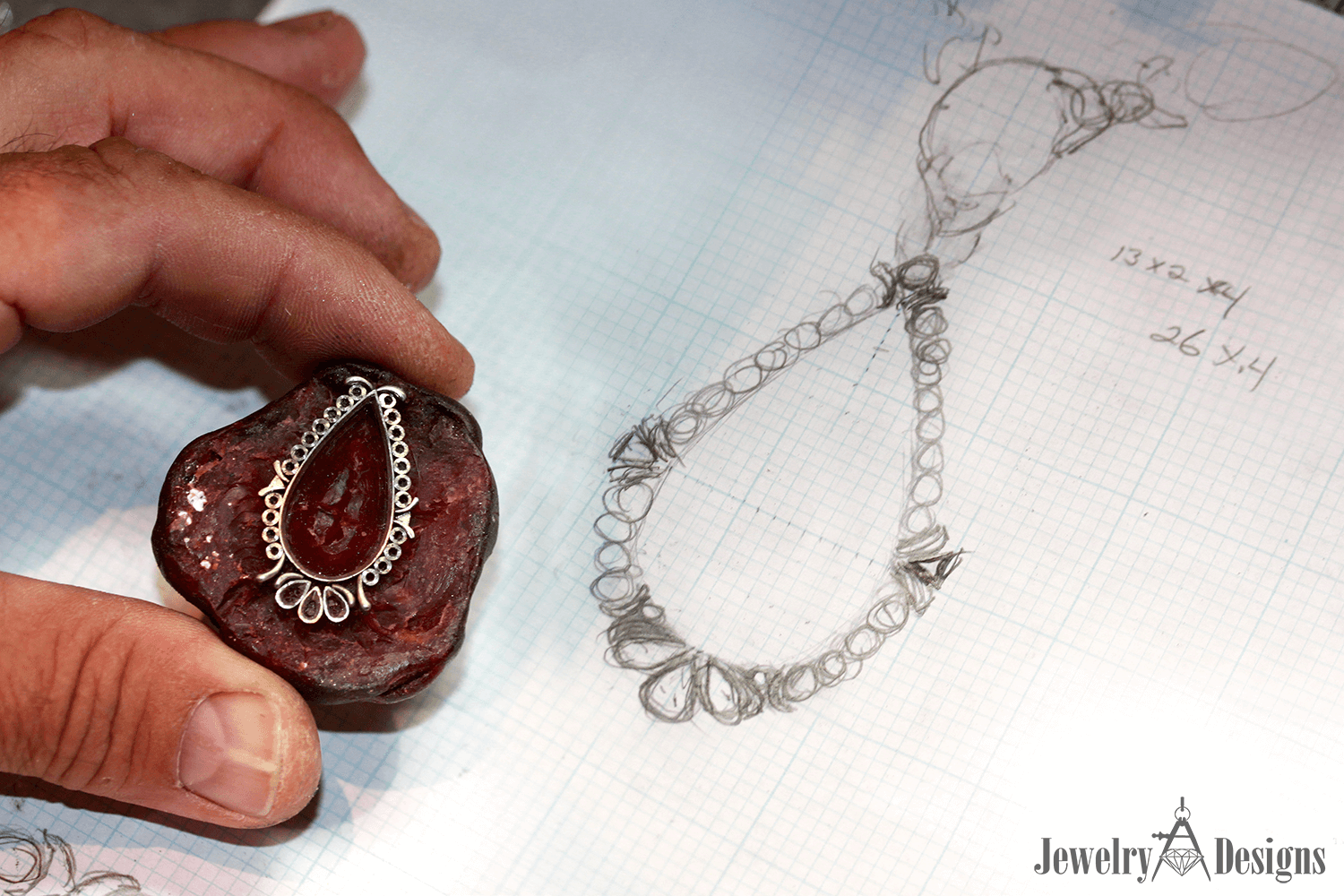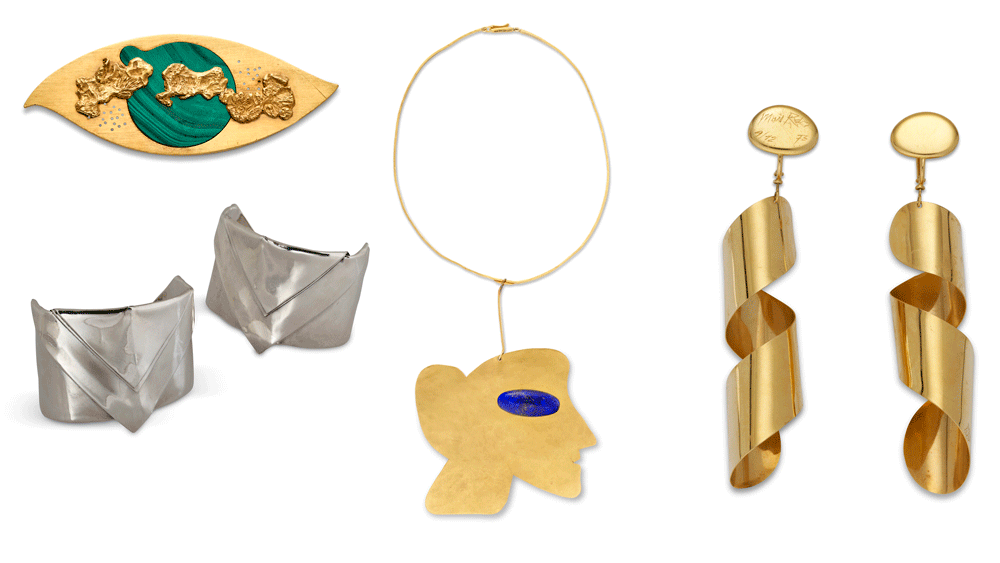Have you ever wondered how artistic movements have shaped jewelry design? What influences have been at play in the evolution of jewelry over the years? In this article, we will explore the influence of artistic movements on jewelry design. We will look at the impact of specific movements and discuss how they have shaped the way we view and wear jewelry today.
1. Art Nouveau and Jewelry Design
The Art Nouveau movement was an international art style that emerged in the late 19th century and early 20th century. It was characterized by organic and floral motifs, curved lines, and asymmetrical forms. It was a response to the industrialization of the period and a rejection of the traditional, classical style of design. Art Nouveau jewelry design was a reflection of this style, using many of the same motifs and forms.
The influence of Art Nouveau on jewelry design is evident in the work of many famous jewelers, such as René Lalique in France and Louis Comfort Tiffany in the United States. Lalique’s work was heavily influenced by the natural forms and motifs of Art Nouveau. He often used curved lines and floral designs, and he is credited with popularizing the use of glass in jewelry design. Tiffany also used many of the motifs associated with Art Nouveau in his jewelry, including his famous dragonfly and lily pad designs.
The influence of Art Nouveau on jewelry design is still evident today. Many modern jewelers use the motifs and forms of Art Nouveau in their designs. Art Nouveau jewelry is often characterized by its use of organic and floral motifs, curved lines, and asymmetrical forms. Many modern jewelers also use glass in their designs, a technique popularized by Lalique.
The influence of Art Nouveau on jewelry design can be seen in the work of many modern jewelers. It is a style that continues to be popular and relevant today.
2. Cubism and Jewelry Design
Cubism was an artistic movement that emerged in the early 20th century. It was characterized by the use of geometric shapes to create abstract forms. This movement had a significant impact on jewelry design, particularly in the use of abstract shapes and forms.
One of the key features of Cubism was the use of multiple viewpoints. This idea was translated into jewelry design by using asymmetrical shapes and multiple layers. Jewelry designers began to experiment with different materials such as metal, wood, and glass to create unique pieces.
Pablo Picasso and Georges Braque were two of the most famous Cubist artists. Their work inspired jewelry designers to create pieces that were both abstract and functional. Many of these pieces were designed to be worn as necklaces, bracelets, or brooches.
If you are interested in learning more about Cubism and its influence on jewelry design, there are many resources available online. The Tate Modern website has an excellent article on Cubism, which includes quotes from the artists themselves. The Victoria and Albert Museum also has a collection of Cubist jewelry that you can view online.

3. Surrealism and Jewelry Design
Surrealism has had a strong influence on jewelry design. Surrealism is an artistic movement that emerged in the 1920s. It was driven by the idea of exploring the subconscious mind and its connection to reality. Surrealism rejected the conventions of reality and sought to create art that was dreamlike and mysterious. In jewelry design, surrealism has been used to create pieces that are both bold and whimsical.
Surrealist jewelry often features unexpected combinations of elements. It can be abstract and unpredictable, with a focus on the surrealist idea of chance. For example, surrealist jewelry often features two unrelated objects, such as a bird and a key, combined in an unexpected way. This creates a unique visual effect that is both strange and captivating.
Surrealist jewelry also often features bold, vibrant colors. This helps to create an atmosphere of mystery and excitement. The pieces often feature a mix of materials, such as metal, enamel, and gemstones, which further add to the surrealist aesthetic.
Surrealist jewelry design is a great way to make a bold statement and add a touch of whimsy to any outfit. It is also a great way to explore the idea of the subconscious and its connection to reality.
4. Postmodernism and Jewelry Design

Postmodernism is a movement that dates back to the 1950s and has influenced many aspects of modern life, including jewelry design. Postmodernism rejects the traditional rules of art and design in favour of experimentation and playfulness. This has led to jewelry designs that are bold, colourful, and often feature unexpected elements.
The modernist movement of the mid-20th century was characterized by a focus on function and minimalism. Postmodernism has had a profound influence on jewelry design, as it has allowed for greater creativity and experimentation. Postmodern jewelry often features bold colors and unexpected elements, such as mixing different materials, mixing different colors, and using unexpected shapes.
Postmodern jewelry has also been influenced by pop culture and the use of symbols. Popular motifs include animals, plants, and iconic figures from popular culture, such as superheroes and cartoon characters. This has allowed for a greater variety of styles and designs, and has allowed jewelry designers to create unique, eye-catching pieces.
Postmodernism has allowed jewelry designers to be more creative and to push the boundaries of traditional jewelry design. This has allowed for the creation of unique, eye-catching pieces that are sure to make a statement.
5. Futurism and Jewelry Design
Futurism was an art movement that originated in Italy in the early 20th century. It was characterized by an emphasis on technology, speed, and modernity. These themes were reflected in jewelry design during the period, which featured geometric shapes, streamlined forms, and the use of new materials such as plastic and chrome.
Some of the key figures in the Futurist jewelry movement included artists like Giacomo Balla and Fortunato Depero. They created pieces that were meant to be worn as part of a complete outfit, rather than as standalone accessories. This approach reflected the Futurist belief in the integration of art and everyday life.
Today, Futurist jewelry designs remain popular with collectors and enthusiasts. They are prized for their innovative use of materials and their futuristic aesthetic. If you are interested in learning more about Futurist jewelry, there are many resources available online. One good place to start is the website of the Museum of Modern Art, which has an extensive collection of Futurist art and design.

The piece is made from chrome and other modern materials, reflecting the Futurist emphasis on technology and modernity.
6. Minimalism and Jewelry Design
Minimalism is an art movement that began in the 1960s and has since influenced many forms of art and design, including jewelry design. Minimalist jewelry design is characterized by simplicity, clean lines, and a focus on the natural beauty of materials.
Minimalist jewelry often features geometric shapes, such as circles and squares, and is made from materials such as gold, silver, and natural stones. The pieces are often small and delicate, allowing them to be worn every day and with a variety of outfits.
Minimalist jewelry design is popular with those who appreciate simplicity and understated elegance. It is also a popular choice for those who prefer to wear jewelry that is ethically and sustainably made.
If you are interested in minimalist jewelry design, there are many resources available online to help you learn more. Some great places to start include jewelry design blogs, online marketplaces for handmade jewelry, and social media platforms such as Instagram.
To enhance this content, we recommend adding an image of a minimalist jewelry piece, with a description of the materials used and the inspiration behind the design. This will help readers visualize the style and better understand the principles of minimalist jewelry design.

The pendant hangs from a delicate chain and is designed to be worn every day.In this article, we have explored the influence of various artistic movements on jewelry design throughout history. We have seen how Art Nouveau inspired organic and floral motifs, while Cubism influenced the use of geometric shapes and multiple layers. Surrealism encouraged unexpected combinations of elements, and Postmodernism allowed for greater experimentation and playfulness. Finally, Futurism emphasized technology and modernity, while Minimalism focused on simplicity and natural beauty.
Conclusion:
Artistic movements have significantly shaped jewelry design throughout history. From the intricate motifs of the Renaissance to the bold geometries of Art Deco, each era brought its unique flair to jewelry. The Romantic period emphasized nature and emotion, while the Arts and Crafts movement prioritized handcraftsmanship. Art Nouveau introduced flowing lines and natural forms, and Modernism paved the way for abstract and minimalist designs. These movements, by influencing jewelry aesthetics, have ensured that jewelry remains not just an accessory but a form of art and self-expression.

